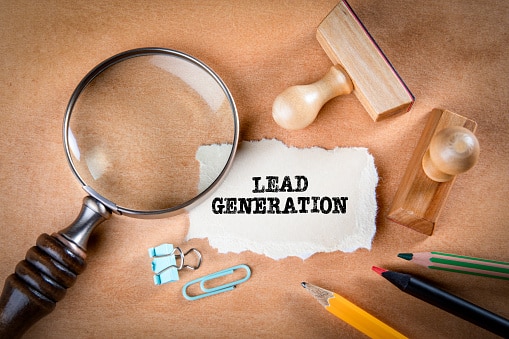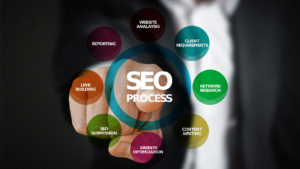Lead Generation Funnels: Everything You Need To Know

A lead generation funnel can be defined as a process used to generate leads from potential customers. It starts with the identification of the target market, followed by the development of a marketing strategy and then the execution of that strategy. Finally, it’s important to track the results and measure the effectiveness of your lead generation efforts.
What Are The Different Stages Of A Lead Generation Funnel?
Stage 1: Awareness (TOFU)
In stage 1 of the lead generation funnel, you must make people aware of your product or service. This can be done through advertising, word-of-mouth referrals, or social media campaigns. Once people know about your product or service, you must convince them to take action. If you can successfully convert leads in stage 1 of the lead generation funnel, you’re well on your way to success.
Stage 2: Data
In the second stage of a lead generation funnel, data is collected from potential customers. This may involve asking them questions about their needs and wants or surveying them to gather information about their current situation. Once data is collected, it must be analysed to create a lead gen strategy. This involves understanding the customer’s needs and finding ways to fulfil them.
Stage 3: Marketing Qualified Lead (MQL) and Sales Qualified Lead (SQL) (MOFU)

The next step in the lead generation funnel is marketing qualified leads (MQLs). MQLs are leads that a company has screened as being interested in their product or service. This means that the MQL has answered at least one question about their interest in the product or service. After answering a few questions, the MQL may be contacted via email or phone to schedule a meeting. If the MQL signs up for a mailing list, the company will send them information about upcoming events or offers related to their product or service.
In addition, the sales-qualified lead is the stage where the business has identified a potential customer who is interested in what the company offers. The SQL must have been researched and confirmed by the customer’s needs. In this stage, keeping contact with the customer and establishing trust are important. It is also essential to create a relationship with the customer so that they will continue to purchase from you.
Stage 4: Targets and Prospects (BOFU)
In this stage, you must determine if the prospect is interested in your product or service. Once you have a list of potential targets, you need to identify how to reach them. Some methods include email marketing, social media, direct mail, and telemarketing. After reaching the targets, it’s important to convert them into buyers.
Stage 5: Recycled
At this stage, you have successfully converted a lead into a paying customer and want to keep them as long as possible.
Stage 6: Opportunity
And in this stage, the lead generation funnel is designed to maximise the number of leads generated. This is done by identifying the most suitable medium and using it in a targeted way.
How To Create A Lead Generation Funnel
You can take a few key steps to create a lead generation funnel.
- The first is creating an effective lead capture form. This should be easy to use and allow visitors to easily enter their email addresses and other information.
- Next, you need to set up automated marketing campaigns that send out relevant content and incentives to your leads.
Finally, you need to track which campaigns are working best and make necessary adjustments accordingly. By following these simple steps, you can create a successful lead-generation process that will help boost your website’s revenue.
4 Reasons Why You Should Start Building Leads
1. Helps A Business To Make Sales and Expand

One of the most important benefits is that it helps a business to make sales and expand. In fact, a study by Forbes found that companies with leads have a 44% higher chance of closing a sale than those without them. Generating leads can also increase customer retention rates and reduce marketing expenses. Finally, lead generation can be incredibly profitable for your business when done correctly.
If you’re serious about growing your business, you must start building leads today.
2. Raises Awareness Of Your Brand

Raising awareness of your brand is a key way to increase leads and sales. By creating a positive association with your company, you’ll be more likely to attract new customers who are curious about what you have to offer. By providing valuable information and insights, you can capture the attention of potential buyers and convert them into leads interested in learning more about your product or service.
3. Enables Sales and Marketing Departments to Build Productive Relationships
Leads allow salespeople and marketers to keep track of progress on deals they’re working on. Knowing which deals are progressing well or not helps them prioritise their time and resources accordingly.
4. Lead Generation is A Modern And Targeted Method of Marketing
Lead Generation is a modern and targeted marketing method that can create more leads for your business. With lead generation, you can target potential customers by using different methods, such as email marketing, social media, and website visits.
How To Grow Your Lead Generation Funnel
If you’re looking to grow your lead generation funnel, here are a few tips to get started:
- Make it easy for your customers to sign up for your email list. Include a sign-up form on your website and make it as easy as possible for them to join.
- Create valuable content that’s worth reading. Ensure your blog posts are informative and interesting also, include compelling images and videos to keep people hooked.
- Focus on quality over quantity when it comes to sending emails. Only send emails to those who have shown an interest in what you have to offer by signing up for your newsletter or engaging with your content.
Promote your funnel through social media platforms like Facebook and Twitter.
Conclusion
In conclusion, lead generation funnels are an excellent way to collect valuable information from potential customers. They allow businesses to focus on collecting leads from potential customers while providing them with the necessary tools to convert those leads into sales.
Was this article useful? Let us know in the comments.
FAQ
What are the benefits of using a website lead generation funnel?
A website lead generation funnel can be an extremely helpful tool for businesses of all sizes. The benefits of using a funnel include increased website traffic, higher conversion rates, and increased ROI. In addition, a website lead generation funnel can help to reduce customer acquisition costs (CAC).
How do you make a lead funnel on Facebook?
There are a few ways to make a lead funnel on Facebook. One option is to create a custom ad campaign that targets your specific audience type. Another option is to create a contest or giveaway that encourages people to subscribe to your newsletter or follow you on social media.
You can also use Facebook’s lead gen tools, such as cold emailing or ads targeting people who have already visited certain pages on your website. Whatever route you choose, make sure you focus on providing value and capturing the interest of your potential customers.
What is the correct leads funnel process?
The correct lead funnel process starts by understanding your target market. Once you have a clear picture of who you are selling to, it’s important to design a sales process that resonates with them. Next, create a series of engaging content pieces that attract leads and convert them into paying customers. You must also keep your funnel clean and organised to ensure high conversion rates. You can create a successful lead funnel by following these simple steps.




